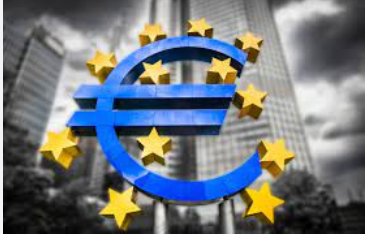Economy of the European Union
The European Union (EU) is a political and economic union of 27 member states, forming a single market with a combined population of over 440 million people. The EU’s economy is the second-largest in the world by nominal GDP and the third-largest by purchasing power parity (PPP).
Overview
The EU’s economy is characterized by a high level of economic integration, with a single market that allows for the free movement of goods, services, capital, and people among member states. The EU also has a common trade policy, negotiating trade agreements with non-EU countries on behalf of its members.
In 2020, the EU’s nominal GDP was estimated at $15.6 trillion, representing approximately 18% of the world’s economy. The EU’s GDP per capita in 2020 was $35,165, higher than the world average of $10,926.
Key Economic Sectors
The EU’s economy is diverse, with a mix of industries contributing to its overall performance. Some of the key sectors include:
- Services: The service sector accounts for over 70% of the EU’s GDP and employment. This includes financial services, tourism, healthcare, and retail.
- Manufacturing: The EU is a major global manufacturer, with a strong presence in the automotive, aerospace, pharmaceuticals, and chemicals industries.
- Agriculture: While agriculture accounts for a small share of the EU’s GDP (around 1.5%), the EU is a significant producer and exporter of agricultural products, such as wheat, dairy, and wine.
- Digital Economy: The EU has been focusing on developing its digital economy, with initiatives such as the Digital Single Market strategy, which aims to create a seamless online marketplace across the EU.
Monetary Policy and the Euro
The European Central Bank (ECB) is responsible for the monetary policy of the 19 EU member states that have adopted the euro as their currency. The ECB’s primary objective is to maintain price stability, defined as an inflation rate below, but close to, 2% over the medium term.
The euro, introduced in 1999, is the second-most traded currency in the world after the US dollar. As of 2021, the eurozone consists of Austria, Belgium, Cyprus, Estonia, Finland, France, Germany, Greece, Ireland, Italy, Latvia, Lithuania, Luxembourg, Malta, the Netherlands, Portugal, Slovakia, Slovenia, and Spain.
Trade and Investment
The EU is the world’s largest trading bloc, accounting for around 15% of global trade in goods and services. The EU has a common external trade policy, negotiating trade agreements with non-EU countries as a single entity.
The EU has free trade agreements (FTAs) with many countries and regional blocs, such as Canada, Japan, South Korea, and Mercosur. The EU is also a major source and recipient of foreign direct investment (FDI), with intra-EU FDI flows accounting for a significant share of total FDI.
Economic Challenges and Policies
The EU faces several economic challenges, including:
- Aging population: Many EU countries have aging populations, which can lead to increased healthcare and pension costs and a shrinking workforce.
- Income inequality: There are significant disparities in income and living standards among EU member states and regions.
- Public debt: Some EU countries have high levels of public debt, which can hinder economic growth and stability.
- Unemployment: While overall unemployment rates have declined in recent years, youth unemployment remains high in some EU countries.
To address these challenges, the EU has implemented various policies and initiatives, such as:
- Europe 2020 Strategy: A 10-year strategy (2010-2020) aimed at promoting smart, sustainable, and inclusive growth.
- European Semester: An annual cycle of economic and fiscal policy coordination among EU member states.
- Cohesion Policy: A regional policy that aims to reduce economic and social disparities among EU regions by investing in infrastructure, human capital, and innovation.
- European Green Deal: A set of policy initiatives aimed at making the EU climate-neutral by 2050 while promoting sustainable economic growth.
Impact of Brexit
The United Kingdom’s withdrawal from the EU (Brexit) on January 31, 2020, has had significant implications for the EU’s economy. The UK was the EU’s second-largest economy and a major contributor to the EU budget.
Brexit has led to increased trade barriers and economic uncertainty, with potential long-term impacts on investment, trade flows, and economic growth in both the UK and the EU.
The European Union’s economy is a complex and diverse entity, characterized by a high level of integration and a shared commitment to economic growth and stability. While the EU faces various challenges, such as an aging population, income inequality, and the impact of Brexit, it has implemented a range of policies and initiatives to address these issues and promote sustainable economic development.
As the EU continues to navigate the evolving global economic landscape, its ability to adapt and innovate will be crucial in maintaining its position as a major economic power and ensuring the well-being of its citizens.


